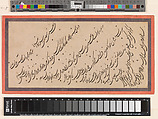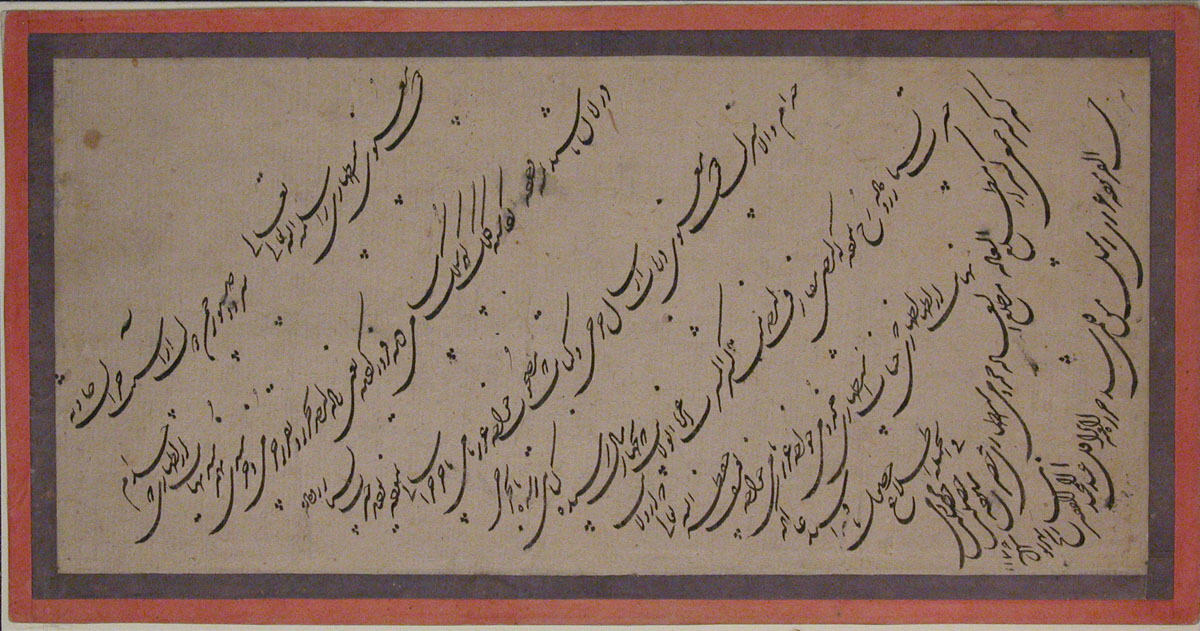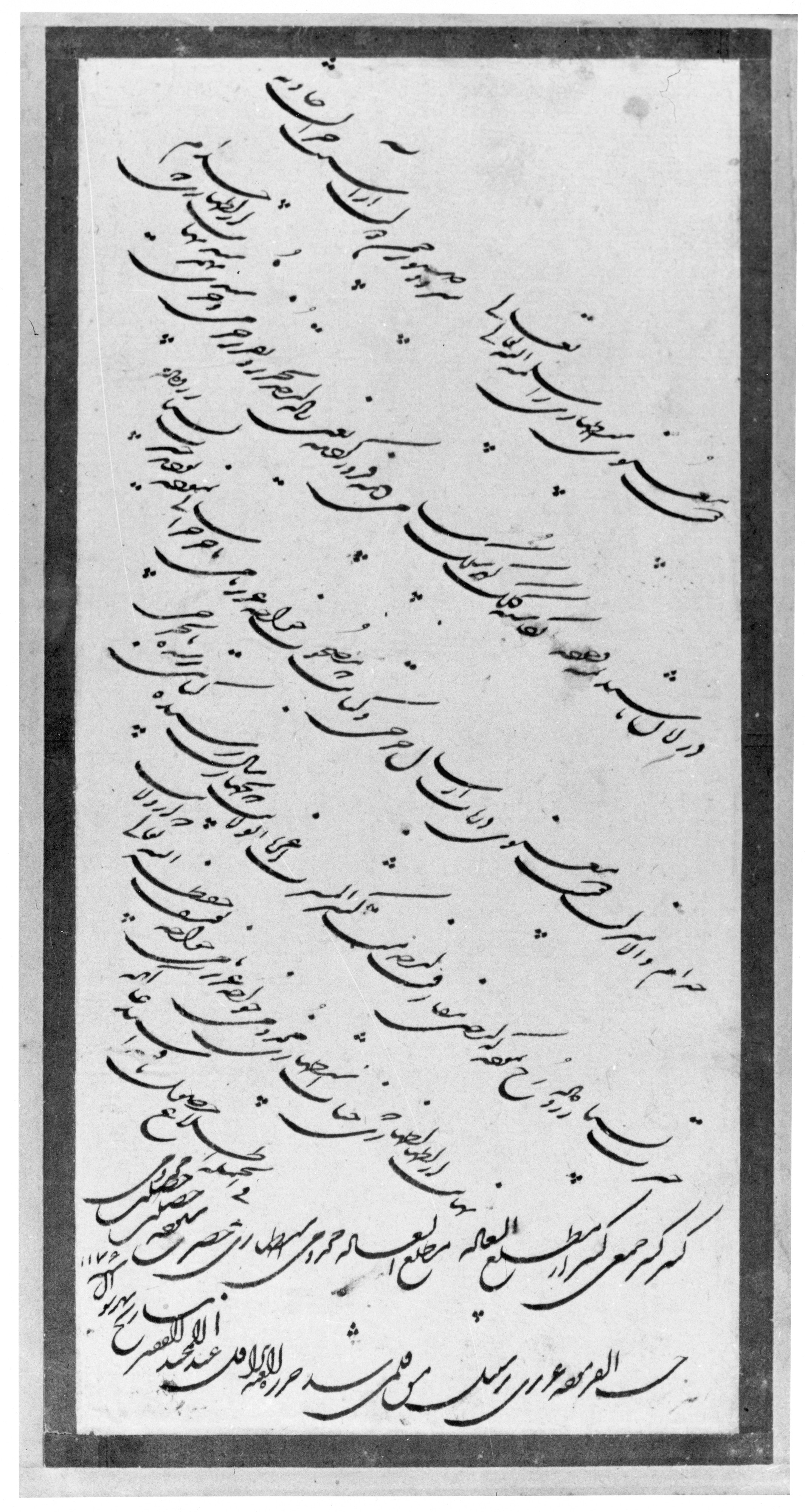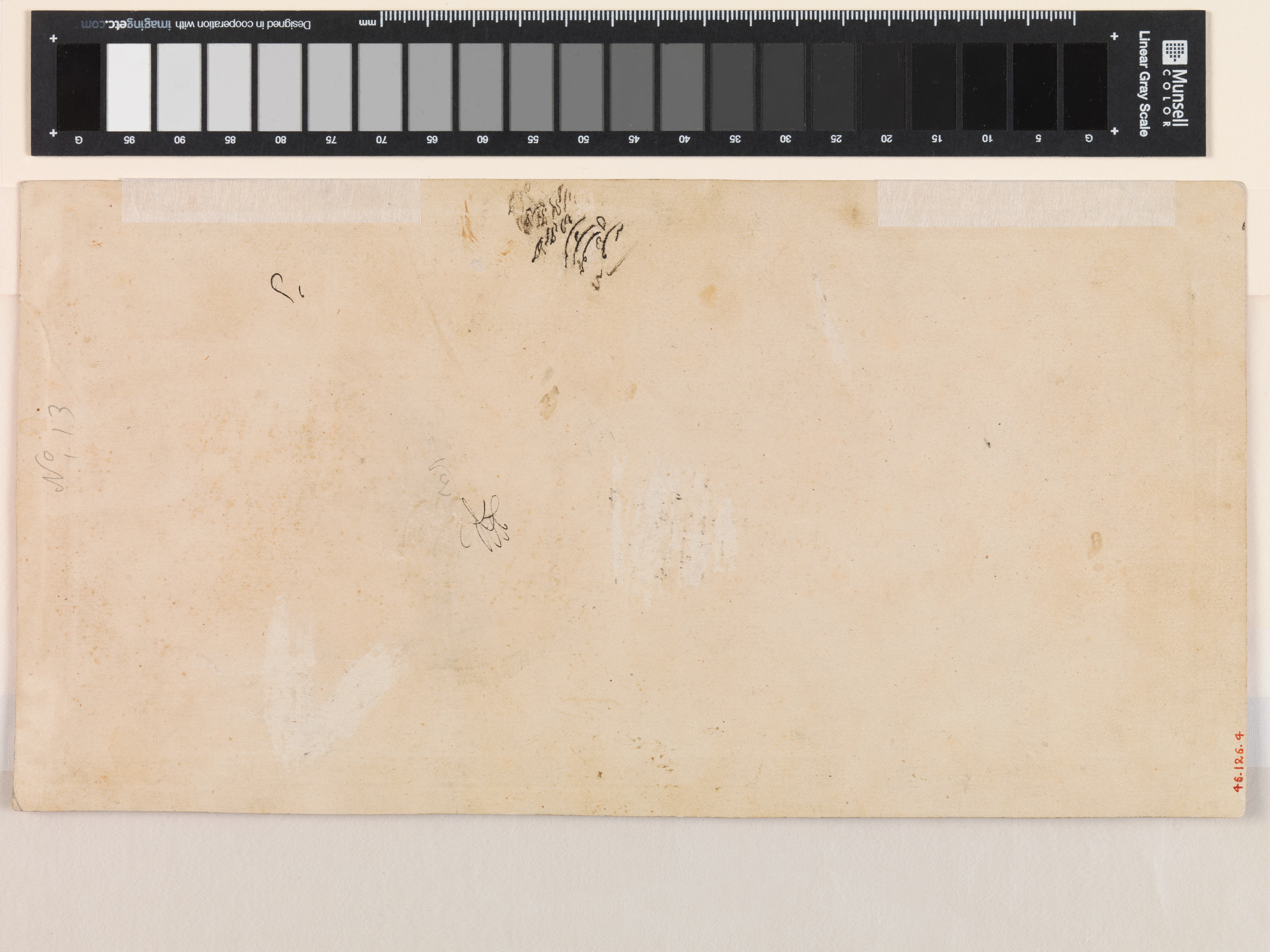Page of Calligraphy
Calligrapher Abd al-Majid Taleqani
Not on view
The shikasta or "broken script," developed in the seventeenth century, reached its peak in the eighteenth and nineteenth century. This script had little currency outside the borders of Iran and was created to fill a need for quick and efficient yet beautiful writing that would be used primarily for private correspondence and administrative documents. In shikasta horizontal regularity is not the norm; instead words fluidly rise and fall, emphasizing delicate grace and movement.
Due to rights restrictions, this image cannot be enlarged, viewed at full screen, or downloaded.
This artwork is meant to be viewed from right to left. Scroll left to view more.





